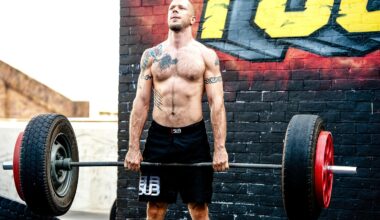How Mobility Equipment Improves Balance and Coordination
Mobility equipment is essential for improving balance and coordination, particularly for individuals facing physical challenges. By integrating tools like balance boards, therapy balls, and wobble cushions into routine workouts, users can effectively enhance their stability. These devices allow for controlled movement and help perform balance exercises in a safe and efficient manner. Regular use can lead to significant progress in motor skills, enabling individuals to regain independence in daily activities. For seniors, maintaining balance is crucial to avoid falls, which can cause severe injuries. Mobility equipment, therefore, plays a critical role in fall prevention. In addition to standard fitness routines, incorporating mobility tools into rehabilitation programs enhances recovery from injuries. Physical therapists often recommend specific devices tailored to individual needs to ensure optimal healing. Utilizing mobility equipment promotes better body awareness, allowing users to develop a deeper understanding of their movements. Enhanced coordination can lead to improved performance in various physical activities, making mobility equipment an indispensable asset for fitness enthusiasts and those in recovery alike. The versatility and effectiveness of these tools contribute significantly to overall health and wellness.
In addition to basic balance tools, advanced mobility equipment offers users a variety of innovative features designed to challenge coordination and stability. Devices such as stability discs and dynamic balance trainers create an unstable surface that engages core muscles more effectively than traditional exercises. These tools require users to adapt their movements constantly, enhancing proprioception—the body’s ability to perceive its position in space. This innate sense is critical for coordination, and the right mobility equipment can significantly enhance it. Furthermore, technology has merged with traditional fitness tools, resulting in interactive applications that provide real-time feedback during workouts. Users can track their progress and adjust their routines based on personal performance metrics, further motivating them to improve. In addition, group classes using mobility equipment encourage social interaction, creating a supportive environment for those working toward fitness goals. The combination of individual and group exercises can be very beneficial for users. Engaging in collaborative settings helps individuals remain accountable for their progress while fostering a sense of community. Through these social connections, individuals can share their journeys and support one another in achieving better balance and coordination.
Benefits of Specialized Mobility Equipment
Specialized mobility equipment, such as resistance bands and stability trainers, offers targeted assistance for improving balance and coordination. Resistance bands can be used to create tailored workouts that focus on specific muscle groups, thereby enhancing overall strength and stability. By incorporating band exercises into routines, users can work on both upper and lower body strength simultaneously. These bands allow for varied tension levels, accommodating a range of fitness levels and rehabilitation needs. Moreover, stability trainers are often used during balance training sessions because they provide the necessary support while challenging users to engage their core. Increased core engagement translates to improved stability and control during everyday movements. In addition to resistance bands and stability trainers, foam rollers are excellent tools for enhancing mobility, flexibility, and balance. Foam rolling helps in muscle recovery and injury prevention by improving circulation and reducing muscle tightness. Using these specialized devices as part of a well-rounded fitness routine not only builds strength but also optimizes balance and coordination during daily activities. People of all ages can feel more capable and active because of these improvements in mobility.
Importantly, the impact of mobility equipment extends beyond physical exercise; it can also boost mental health. Engaging in regular exercises that improve balance and coordination leads to feelings of accomplishment, significantly enhancing self-esteem. Individuals who may struggle with mobility often experience a sense of frustration, but using specialized equipment can create a positive feedback loop where progress is visible and motivating. Additionally, as users become more confident, their anxiety around physical activities decreases, allowing for a more active lifestyle. Not only does mobility equipment facilitate better coordination, but it also nurtures the mind-body connection essential for mental well-being. Mindfulness practices during workouts encourage users to focus on their movements and breathe, promoting relaxation and reducing stress. Feeling both mentally and physically capable fosters a better quality of life. Various community classes and online resources available now make it easier for users to engage with these mobility tools without high costs. Various fitness apps feature mobility-focused workouts, making it more accessible to those looking to enhance balance and coordination while enjoying the journey towards improved functionality.
Choosing the Right Equipment
Selecting appropriate mobility equipment can seem daunting due to the vast array of options available in the market today. Beginners should prioritize equipment that caters specifically to their unique needs, focusing on safety and comfort. It’s essential to consult with healthcare professionals or trainers to determine the best tools for individual capabilities. Starting with basic items such as balance pads, therapy balls, or simple wobble boards can provide a solid foundation for balance improvement. From there, users can gradually incorporate more advanced tools into their routine to continue challenging their coordination efforts. Opting for adjustable and versatile equipment can maximize workout potential, allowing users to modify exercises as their skills improve. Quality should also be a key consideration; investing in durable, reliable equipment supports longevity and effective performance during workouts. User reviews and expert recommendations can guide buyers toward equipment known for their effectiveness and durability. As individuals become more confident in choosing their mobility items, they can create varied and enjoyable routines. Ultimately, the right equipment can empower users to navigate their fitness journeys safely and effectively while enhancing their balance and coordination.
As users embark on their journey to improve balance and coordination through mobility equipment, it’s crucial to establish a consistent workout routine. Regularity is key to seeing tangible results. Users should start with shorter sessions and gradually increase their duration and intensity, ensuring that they listen to their bodies throughout the process. Including a warm-up and cool-down phase in each workout is vital for avoiding injuries and supporting muscle recovery. Many fitness experts recommend incorporating various exercises that target multiple muscle groups, thus enhancing overall balance and strength. Diversifying routines keeps users engaged and motivated, preventing boredom and promoting adherence. Collaborating with fitness instructors or joining group classes can foster a supportive environment, leading to better outcomes. Setting achievable goals ensures that users remain focused and allows them to celebrate their achievements along the way. Improvements in balance and coordination can take time, but with dedication and the right tools, progress is inevitable. Whether it’s for personal fitness or rehabilitation, mobility equipment provides a pathway to success. Ultimately, enhanced balance and coordination opens doors to more enriching physical experiences, allowing individuals to live life to its fullest.
Conclusion
In conclusion, mobility equipment plays a pivotal role in enhancing balance and coordination, supporting users to lead more active, fulfilling lives. With an array of benefits, including improved physical health and mental clarity, incorporating mobility tools into routines can significantly impact overall quality of life. Users of all ages can experience transformations in their daily activities, whether by avoiding falls, enhancing athletic performance, or nurturing a positive mindset. By embracing specialized equipment tailored to their individual needs and capabilities, individuals can confidently embark on their fitness journeys. Furthermore, fostering a supportive community through shared experiences with mobility equipment can strengthen motivation and accountability. As more people recognize the importance of balance and coordination, mobility equipment will undoubtedly become integral in fitness and rehabilitation practices. The key to success lies in consistent practice, safe equipment choices, and maintaining a positive attitude. Achieving better balance and coordination can unlock newfound freedom and enjoyment in every aspect of life. With the right tools, targeted exercises, and supportive environments, enhancing one’s mobility is within reach, empowering individuals to take control of their fitness goals.
In addition to enhancing balance and coordination, mobility equipment encourages a proactive approach to health and wellness. Individuals engaging in mobility practices experience improved strength, flexibility, and overall physical condition. As they progress, users often find that their confidence in performing daily tasks grows, leading to greater independence. Furthermore, engaging in mobility exercises can enhance mindfulness and focus, as users must concentrate on their movements and body position. This mental aspect is as vital as physical strength. People can cultivate a holistic wellness routine by integrating mobility equipment into fitness sessions. The sense of accomplishment felt after mastering a new skill or exercise can also significantly improve motivation. It is essential for users to recognize their progress, no matter how small. Celebrating minor victories, such as improved balance time or strength levels, can encourage continuity and prevent plateauing. Additionally, groups or community-centered classes utilizing mobility equipment foster social interaction, a factor critical to sustaining motivation and creating enjoyable experiences. By taking charge of their journey, individuals can improve not just their balance and coordination but their overall mindset towards fitness, leading to sustained and long-term results.


